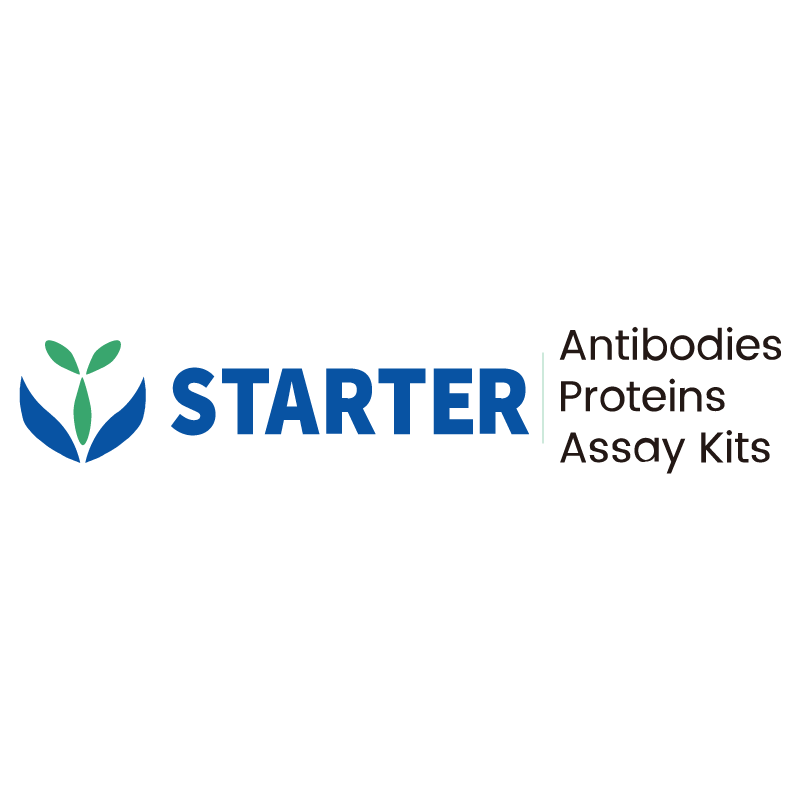WB result of USP4 Recombinant Rabbit mAb
Primary antibody: USP4 Recombinant Rabbit mAb at 1/1000 dilution
Lane 1: HeLa whole cell lysate 20 µg
Lane 2: THP-1 whole cell lysate 20 µg
Lane 3: MCF7 whole cell lysate 20 µg
Lane 4: HepG2 whole cell lysate 20 µg
Secondary antibody: Goat Anti-rabbit IgG, (H+L), HRP conjugated at 1/10000 dilution
Predicted MW: 110 kDa
Observed MW: 110 kDa
Product Details
Product Details
Product Specification
| Host | Rabbit |
| Antigen | USP4 |
| Synonyms | Ubiquitin carboxyl-terminal hydrolase 4, Deubiquitinating enzyme 4, Ubiquitin thioesterase 4, Ubiquitin-specific-processing protease 4, Ubiquitous nuclear protein homolog, UNP, UNPH |
| Immunogen | Synthetic Peptide |
| Location | Cytoplasm, Nucleus |
| Accession | Q13107 |
| Clone Number | S-1434-6 |
| Antibody Type | Recombinant mAb |
| Isotype | IgG |
| Application | WB, ICC |
| Reactivity | Hu, Ms, Rt |
| Purification | Protein A |
| Concentration | 0.5 mg/ml |
| Conjugation | Unconjugated |
| Physical Appearance | Liquid |
| Storage Buffer | PBS, 40% Glycerol, 0.05% BSA, 0.03% Proclin 300 |
| Stability & Storage | 12 months from date of receipt / reconstitution, -20 °C as supplied |
Dilution
| application | dilution | species |
| WB | 1:1000 | null |
| ICC | 1:500 | null |
Background
Ubiquitin-specific protease 4 (USP4) is a critical enzyme involved in the regulation of protein homeostasis by removing ubiquitin chains from target proteins, thus impacting protein stability, localization, and function. It belongs to a large family of deubiquitinating enzymes (DUBs) and contains a DUSP-UBL domain along with a UBL-insert catalytic domain. USP4 shares a common domain organization with its paralogs USP11 and USP15. This enzyme plays a significant role in a variety of cellular processes, including cell cycle regulation, transcriptional regulation, DNA repair, and immune responses. It has also been implicated in the regulation of several signaling pathways, such as p53, TGF-β, Wnt/β-catenin, and NF-κB, which are crucial in cellular homeostasis and disease progression. Abnormal expression or activity of USP4 is associated with a wide range of diseases, particularly cancers. It can function as either an oncoprotein or a tumor suppressor, depending on the cellular context, and its dysregulation has been observed in various malignancies, including breast, colorectal, lung, and brain cancers. USP4 has been reported to promote tumor growth, invasion, and metastasis by stabilizing oncoproteins and inhibiting tumor suppressors. In addition to its role in cancer, USP4 has been linked to other pathological conditions such as viral and bacterial infections, acute injury and inflammation, chronic fibrosis-related diseases, and metabolic disorders. It is also involved in the regulation of the immune response, where it can act as either an enhancer or an inhibitor, depending on the specific immune context.
Picture
Picture
Western Blot
WB result of USP4 Recombinant Rabbit mAb
Primary antibody: USP4 Recombinant Rabbit mAb at 1/1000 dilution
Lane 1: NIH/3T3 whole cell lysate 20 µg
Secondary antibody: Goat Anti-rabbit IgG, (H+L), HRP conjugated at 1/10000 dilution
Predicted MW: 110 kDa
Observed MW: 120 kDa
WB result of USP4 Recombinant Rabbit mAb
Primary antibody: USP4 Recombinant Rabbit mAb at 1/1000 dilution
Lane 1: C6 whole cell lysate 20 µg
Secondary antibody: Goat Anti-rabbit IgG, (H+L), HRP conjugated at 1/10000 dilution
Predicted MW: 110 kDa
Observed MW: 120 kDa
Immunocytochemistry
ICC shows positive staining in HeLa cells. Anti-USP4 antibody was used at 1/500 dilution (Green) and incubated overnight at 4°C. Goat polyclonal Antibody to Rabbit IgG - H&L (Alexa Fluor® 488) was used as secondary antibody at 1/1000 dilution. The cells were fixed with 4% PFA and permeabilized with 0.1% PBS-Triton X-100. Nuclei were counterstained with DAPI (Blue). Counterstain with tubulin (Red).


